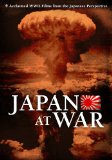| Reviews & Columns |
|
Reviews DVD TV on DVD Blu-ray 4K UHD International DVDs In Theaters Reviews by Studio Video Games Features Collector Series DVDs Easter Egg Database Interviews DVD Talk Radio Feature Articles Columns Anime Talk DVD Savant Horror DVDs The M.O.D. Squad Art House HD Talk Silent DVD
|
DVD Talk Forum |
|
|
| Resources |
|
DVD Price Search Customer Service #'s RCE Info Links |
|
Columns
|
|
|
Japan at War
Four movies: an unflinching harrowing epic, an ultimately embarrassing biopic, an incredibly taut political thriller, and a heartbreakingly honest drama. Animeigo's four-disc box set appropriately titled "Japan at War" gathers the previously mentioned films for film fans to digest. The four films, "Battle of Okinawa," "Father of the Kamikaze," "Japan's Longest Day," and "Black Rain (Kuroi ame)" have all been previously released on DVD, with the latter arriving last October. Here however, they provide a wide reaching look at key events in the history of World War II from a Japanese prospective, with some films being utter masterpieces, while others reaching for the same heights, with varying degrees of success.
Battle of Okinawa
Kihachi Okamoto's "Battle for Okinawa" is one of two films by the director in this set, the other being the fantastic "Japan's Longest Day." Coming just four year after that film, "Battle for Okinawa" is the epitome of a film earning an A for sheer effort. Over the course of it's 149 minute runtime, Okamoto attempts to play out the nearly three months of horrific fighting that took place on the island of Okinawa in 1945 between US and Japanese forces. When the battle ultimately ended, the death toll on both sides was staggering, but the effect on the island and its people would be felt for years.

Thanks to Animeigo's liner notes, I learned the important distinction that Okinawan's consider themselves a separate people from the Japanese. This distinction makes the film's opening 30 minutes all the more meaningful when top Japanese leaders write off any hopes of the island successfully repelling a US attack. Unfortunately these 30 minutes also set the tone for the following 120: erratic and obtuse. Filmed in the style of a docudrama, the nameless narrator is the only character that will easily remain a constant in viewer's minds. Countless military personnel and politicians are introduced and pop up from time to time, but after only one viewing, I have to admit, I couldn't keep track of who was who. I did recognize Tatsuya Nakadai ("The Human Condition") as Col. Hiromichi Yahara, a man who ultimately is responsible for writing the book detailing events that unfold in the film.
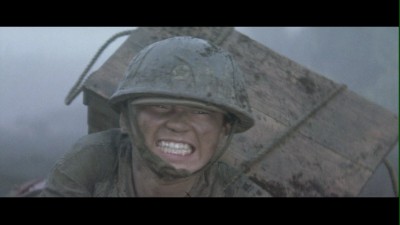
The film deserves much praise for it's refreshing honesty. It dispels the western idea of Japanese soldiers being mindless drones. In one of the film's most powerful sequences a soldier questions the value of dying in battle. He's not content with the notion that dying for one's country or in this case, the Emperor will solve anything. It's a brief sequence that raises many moral implications of war. On the same hand, Okamoto casts the Japanese army in a negative light during scenes based on factual accounts, that civilians were given grenades by soldiers and encouraged to commit suicide, rather than face capture by US soldiers. Of all the scenes in the movie and all the horrors of battle portrayed, the scene in which unfortunate Okinawan refugees believe the lies of what will happen to them at the hands of US troops and willingly huddle in small groups around individual grenades, is the most chilling. Okamoto is never exploitive, you don't see Hollywood gore, in fact the entire sequence is tame compared to modern fare, but the moans of those unlucky enough to survive the explosions and struggle to end their lives is haunting.
"Battle for Okinawa" is truly a noble effort, despite never being a solidly cohesive package. It is by and large a successful docudrama, despite it's over ambition. Two and a half hours, just feels like precious little time to give the battle its justice, especially when 30 of these minutes are spent on the buildup. Performances for the film are solid across the board, although there are more than a handful of flowery sequences of dialogue that do disrupt the realism of the picture. I can't say I could explain any key events of the "Battle of Okinawa" either, but I don't believe that to be Okamoto's intention. Instead, I walked away from the film with the same feeling I did from Clint Eastwood's "Letters from Iwo Jima." The Japanese soldiers were not the one-note enemies that so many Hollywood portrayals of World War II have painted them as. At least the ones on Okinawa had doubts about what they were fighting for, the treatment of their comrades and natives, and the sanity of those in charge, sitting high above the battle, treating lives as, pardon my cliché, game pieces. As I said above, this is a solid A film for effort alone.
RATING: 4.0/5.0
REPLAY: 3.0/5.0
Father of the Kamikaze
"Father of the Kamikaze" is 199 minutes long, and unfortunately, you'll feel every minute of it. Kousaka Yamashita's 1974 "biopic" of Admiral Takijiro Onishi, is tonally and ideologically, the outlier in this set of films. Unlike "Battle for Okinawa" and "Japan's Longest Day" which dealt with specific events in the war and at times openly questioned the thinking of military and political leaders, "Father of the Kamikaze" is a dangerously, slick whitewashing of insanity. As a filmmaker, Yamashita earns my respect for lulling me into near admiration for 90 minutes, as Onishi's tactic of kamikaze attacks on US ships are severely underplayed in their moral consequence.
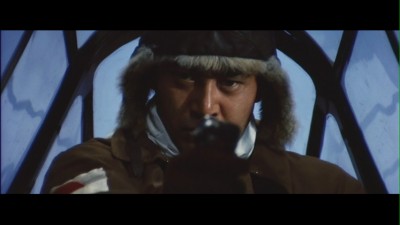
Like "Battle for Okinawa," "Father of the Kamikaze" is slow to pickup, with a lot of set-up placed on the top-level deliberation as to whether suicide attacks should be used. Koji Tsuruta, who despite all the film's problems, delivers an amazing performance, as a man merely following orders, portrays Onishi. Throughout the film he remains conflicted about his part in the war, having to put on a stoic face and inspire pilots into intentionally giving their lives. The scenes in which Onishi gathers his initial group of recruits has all the markings of disposable propaganda, with one soldier bravely saying he'll die for the greater good, with others soon hopping on the bandwagon. In actuality, their situation seems like a catch-22. If they decline, they look like cowards or worse insubordinate; either way, they're dead. At the end of the day, Onishi is torn up inside, questioning what he is doing and how he will be remembered.
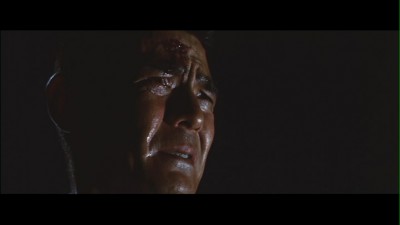
As I said before, the first 90 minutes, nearly get you to sympathize with Onishi and question whether he was some sort of unfortunate victim of circumstance. However, the film's sadly ridiculously handling of such serious events with a hint of patriotism, is ultimately off putting. If that isn't enough to make the film fall apart at the seams, the second half is the final straw. The film's final 100 minutes crawl at a snail's pace with sequences of Onishi sending troops off on their fatal missions, broken up with sequences of introspective melodrama and haphazard portrayals of other historical events. August 15th 1945 or "Japan's Longest Day" is confusingly covered as are what I assume to be other important events in Japan's war history.
"Father of the Kamikaze" also utilizes a narrator to give a pseudo-docudrama feeling, but ultimately, this is a sloppy biopic mixed amongst, hastily handled key points in history. Dialogue is heavily dramatized with heavy doses of poetic speeches, poetic reflections, and banter so earnest and contrived, it could be slapped into a parody of propaganda films. The film's final scene, Onishi's suicide is a snapshot of what is wrong with the film. Instead of using Onishi's actual final words, the filmmaker instead nearly paraphrases them, at times seemingly injecting personal interpretation into the meaning. They are read as Onishi commits suicide in a way that would make Quentin Tarantino jealous. Blood sprays like a geyser and Onishi goes out with macho, grisly bravado. In actuality, Onishi suffered for hours of one wound before dying, but that doesn't fit with the romanticized version of the man called the "Father of the Kamikaze."
RATING: 2.0/5.0
REPLAY: 1.0/5.0
Japan's Longest Day
August 15th was "Japan's Longest Day," the day in which Japan was on the brink of formally announcing surrender. Kihachi Okamoto delivers a masterpiece with his 1967 thriller, "Japan's Longest Day." Filmed in clinical black-and-white so the focus is solely on performance and plot, instead of eye-pleasing scenery, Okamoto manages to make known events exciting, crafting a political thriller that will suck you in so deeply, that once the real physical action unfolds, you'll still be captivated by the buildup.
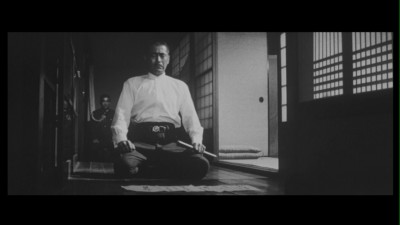
It's my understanding that "Japan's Longest Day" was a huge film for Toho studios, initially commissioned to celebrate it's 35th Anniversary. I'll be very forthcoming and admit, my recognition of classic Japanese actors is severely lacking. The only face I recognized was the one of the cover, Toshiro Mifune, who fills the shoes of General Korechika Anami. I fully expected with such prominent billing for Mifune to be the star of the show here. Surprisingly he wasn't, in more ways than one. The film covers many events unfolding over a very short period, including, top political deliberations, a frantic race to get the Emperor to record a message of surrender, and a quickly brewing coup, just to name a few, As a result Mifune's role is no larger than any other key character. What strikes me as noteworthy about Mifune here, is his ability to fully dominate his character without dominating his fellow actors. He shows stoic reserve and confidence, never missing a beat both verbally and non-verbally. He never showboats, knowing his role in the bigger picture, but still manages to maintain his amazing screen presence. The only top-tier actor who I can imagine being able to pull of the same level of professionalism and seasoned skill is Daniel Day Lewis.
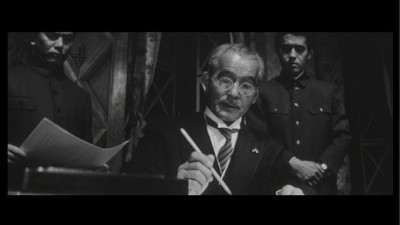
All gushing for Mifune aside, the skill of the other performers is the key ingredient in allowing Okamoto to taken known events with well-known outcomes and injecting them with a fevered intensity. The scenes more quietly covering the team sent to record the Emperor's surrender speech are just as engaging as a violent confrontation between, now ideologically splintered soldiers. As the film progresses and deliberations regarding surrender become more heated, the Emperor is asked to make the final decision. From here, the tension amps up further as a number of military leaders will not tolerate their country showing the world such a weakness. However, it's a more unexpected group that kick things into a violent conclusion.
Okamoto honestly pulls off on screen, something that would look like a mess on paper. "Japan's Longest Day" is equal parts historical record, character drama, political thriller, and action, and manages to entertain 100% at every turn. While I can't speak for it's historical accuracy, I never once felt like the film as telling me what I should think. It's at its core, a "here's how this story goes down" type of picture. Seeing Okamoto hit a grand slam here, four years prior to "Battle of Okinawa" makes me feel more confident in my assumption that he needed more time to make that movie work at the same level as this one; both run two and a half hours, but the timeline of events is vastly different. What more can I say? It's well shot, well written, and well acted, or a damn fine movie.
RATING: 5.0/5.0
REPLAY: 4.5/5.0
Black Rain (Kuroi ame)
"I was 10 when the B-29 came. My family lived underground for three days. We when came up the city was gone. Then the heat brought rain. Black rain. You made the rain black, and shoved your values down our throats. We forgot who we were. You created Sato and thousands like him. I'm paying you back." - Sugai (Tomisaburo Wakayama, Ridley Scott's "Black Rain")
Shohei Imamura's "Black Rain" was released in theaters the same year as Ridley Scott's film of the same name. I quote the above movie because it was the first place I ever heard of the phrase, "black rain," which refers to the toxic fallout following the bombings of Hiroshima and Nagasaki. Despite Scott's film having nothing to do with those events save for that line, I would have likely never discovered Shohei Imamura's masterpiece of the same name.
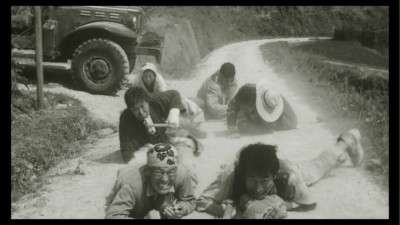
The film is an adaptation of a novel by Masuji Ibuse, chronicling the life of Yasuko (Yoshiko Tanaka) a young woman living with her aunt and uncle, all of whom, were present for the bombing of Hiroshima. The film opens with a depiction of that bombing, a haunting 10 minutes giving viewers a glimpse at the devastation and those, unlucky enough to have been severely maimed by the blast. Yasuko avoids the direct bombing, but on her return home from a day with friends, is covered in the titular black rain. As she flees the city with her family, she becomes the eyes of the viewer, experiencing first hand, the horrors of the bomb. A woman clutches her still nursing, but now deceased baby, a younger brother, horribly disfigured is unrecognizable to a seemingly unscathed older brother. Despite the relative short length of this non-exploitive opening sequence, your stomach will feel cold and empty from seeing a glimpse of this tragedy.
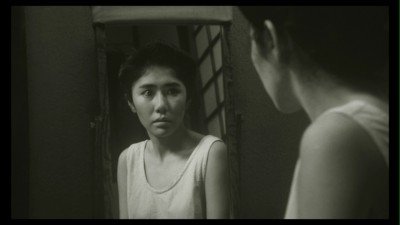
As rapidly as the movie begins, it shifts to a point in time five years later with Yasuko, still with her aunt and uncle, but now in a small village, living out their lives. Here the ultimate tragedy unfolds as the long-term devastation of not only the bombings (or flash as the characters refer to it) but also the war itself. Her aunt and uncle appear healthy, but the more pessimistic uncle warns his wife, that she could fall ill from the effects of radiation without warning. Yasuko is physically fortunate to be given the clean bill of health by a local doctor, but socially cursed. Still being young, it is of gave importance to the village matchmaker that both parties in a potential coupling are free of illness. A rumor begins that despite the clean bill of health, Yasuko was present for the "flash" and the doctor is merely covering this point up.
Imamura crafts an incredibly competent character drama that only sticks out from the crowd as a result of its narrative back-story. The majority of the film is a well-paced character drama, full of authentic performances. The story of the after effects is in actuality, more heartbreaking than the brief scenes of flashback to the events themselves. As we follow Yasuko we see the quiet pain of her social rejection. When she does finally find a kindred spirit in the form of Yuichi, a stone carver who attacks every passing vehicle he can, thinking they are an enemy tank. The relationship that develops midway through the picture between these two characters is fascinating. Yasuko is introduced as a seemingly average woman and her social rejection is hard to understand. Yuichi is introduced as a raving lunatic. When the two share a quiet moment of conversation we can see that inside Yasuko is just as badly damaged, while Yuichi is still a highly intelligent and talented stone carver. When he recounts his tale of spotting tanks in the war, it's plain to see that "Black Rain" wants us all to understand that World War II affected everyone, in every way.
Imamura captures this feeling of sorrow and despair through somber black-and-white cinematography. The beauty of this village is cast with a subtle depression, externalizing the feeling lying in the hearts of many of its residents. The feeling of early 1950s Japan is perfectly rendered on screen, in a movie filmed nearly 50 years later. Best of all, Imamura makes "Black Rain" a film that is likely to reveal more depth upon repeated viewings. There are obviously deeper themes present that are made clearer, when the final outcome is already known. Imamura doesn't need a sweeping epic to tell the tale of Hiroshima survivors, a two-hour standard character drama does just fine, a fitting testament to the skill of the director and cast.
RATING: 5.0/5.0
REPLAY: 5.0/5.0
THE DVD
The Video
Battle of Okinawa
The 2.35:1 anamorphic widescreen transfer is quite stunning for a nearly 40-year old film. I'm quite used to seeing lesser-known films from Japan treated rather casually in the A/V department, but "Battle for Okinawa's" transfer is sharp and vibrant. A minimal amount of film grain is the only indicator of the transfer's age. Color is striking, with exterior scenes popping with life, despite the melancholy events taking place within them. No digital defects mar this remarkable transfer.
VIDEO RATING: 4.5/5.0
Father of the Kamikaze
The 2.35:1 anamorphic widescreen transfer is for the most part very strong. Contrast levels give the overall look at times, a slightly faded feeling. Detail levels are moderate to strong, given the shot, while color levels feel appropriate. Where the transfer loses big points are some action sequences. The film mixes documentary footage with live-action effects shots and some of these effects shots are full of grain and sapped of detail. I suspect this was an intentional effect by the director, but the result is very distracting as the degradation in quality is not always consistent.
VIDEO RATING: 3.5/5.0
Japan's Longest Day
The 2.35:1 anamorphic widescreen transfer delivers an above average black-and-white product. Detail level can vary with a number of shots looking far less striking than others. Contrast levels feel a little too high, with night scenes never quite being as black as they should. Fortunately, like the other films in this set, the transfer is free from any preventable digital defects.
VIDEO RATING: 4.0/5.0
Black Rain (Kuroi ame)
The 1.85:1 anamorphic widescreen transfer lacks great detail, especially for being the most recently produced film. The contrast levels cast the entire image a grey feeling that could be stylistic, but I can't be certain. While it certainly adds to the mood of the film, it does detract from the richness of the cinematography.
VIDEO RATING: 4.0/5.0
The Audio
Battle of Okinawa
The Japanese 2.0 audio is well balanced and distortion free, almost as stunning as its transfer. Unfortunately it is marred by a consistent, low frequency hum that, during the film's quietest moments can be distracting. Animeigo did confirm my suspicion that it was a defect present in their original master and fixing the audio was impossible. It's a disappointing result, but ultimately didn't affect my appreciation of the movie. English subtitles are included in two forms: dialogue only as well as dialogue and translation of key Japanese phrases.
AUDIO RATING: 1.0/5.0
Father of the Kamikaze
The Japanese 2.0 audio is the strongest of the set. Again, it's well balanced and for it's age, aurally pleasant. At the film's highest audio ranges, there is some minor distortion. English subtitles are included in two forms: dialogue only as well as dialogue and translation of key Japanese phrases.
AUDIO RATING: 4.0/5.0
Japan's Longest Day
The Japanese 2.0 audio is serviceable, but overall, shockingly hollow with noticeable high-end distortion. It's nothing that should detract from enjoying the film, but one would expect a more rich sound, especially given the more subdued nature of the film, as opposed to the pure war-movie feel of "Battle of Okinawa" and "Father of the Kamikaze." English subtitles are included in two forms: dialogue only as well as dialogue and translation of key Japanese phrases.
AUDIO RATING: 3.5/5.0
Black Rain (Kuroi ame)
The Japanese 2.0 audio is decidedly flat with as much high-end distortion as "Japan's Longest Day." The film's most shrill sound effects can be grating as a result, while dialogue is only strong as a result of the skill of the performers. English subtitles are included in two forms and two color options (yellow or white): dialogue only as well as dialogue and translation of key Japanese phrases.
AUDIO RATING: 3.5/5.0
The Extras
"Battle of Okinawa," "Father of the Kamikaze," and "Japan's Longest Day" all feature the same brand of extras: a trailer gallery, a picture gallery, and some truly insightful digital liner notes. Animeigo does a solid job of providing some secondary information relating to each film that will likely be enlightening to Western audiences. Specific to "Father of the Kamikaze" is an interactive map of the Pacific, highlighting key positions during the war.
"Black Rain" on the other hand has much more substance in terms of extras. The crown jewel is the never-before-seen, alternate ending to the film, which was to be shown in color. It gives the film's much more ambiguous ending closure, but also affects the ultimate tone of the final cut. Running 19-minutes in length, it's a fascinating look at what could have been.
Two interviews, each run less than ten-minutes, the first, features the film's second assistant director, Takashi Miike. It's a treat to see Miike talk about his early experiences in filmmaking and is a stark contrast from what one would expect from the guy behind the insanity of Miike's own films. The other interview is with the film's star Yoshiko Tanaka. Rounding out the extras are an image gallery, the original trailer, naturally rich liner notes, and a collection of vintage US propaganda films, which are often shocking in their racism.
Final Thoughts
With "Father of the Kamikaze" being the sole outlier, the films that make up the "Japan at War" collection all demand viewing, with "Japan's Longest Day" and "Black Rain" being worthy additions to any film collection. "Battle for Okinawa" remains a very ambitious production, whose sheer potential and effort make the viewing a rewarding experience. Most of all, these four films show a side of the war, unseen by many westerners. These aren't, for the most part, the faceless enemies of Hollywood's most macho and absurd war film, these are real people, who fought for real ideas, just or otherwise. In the specific case of "Black Rain," the effects of the ultimate conclusion to World War II are played out in grim detail, leaving a haunting impression of the precious price of conflict. Highly Recommended.
|
| Popular Reviews |
| Sponsored Links |
|
|
| Sponsored Links |
|
|
| Release List | Reviews | Shop | Newsletter | Forum | DVD Giveaways | Blu-Ray | Advertise |
|
Copyright 2024 DVDTalk.com All Rights Reserved. Legal Info, Privacy Policy, Terms of Use,
Manage Preferences,
Your Privacy Choices | |||||||









